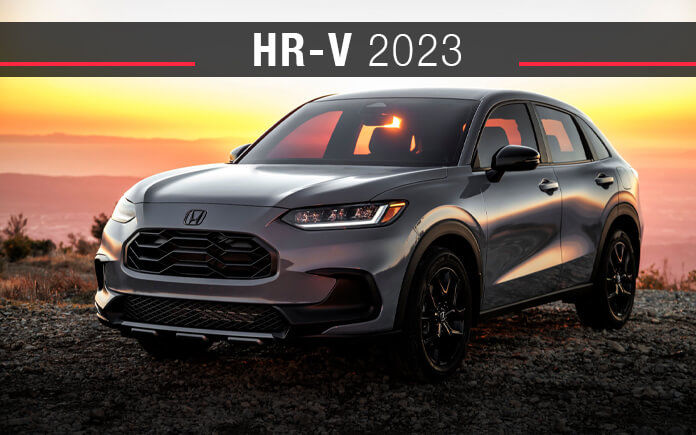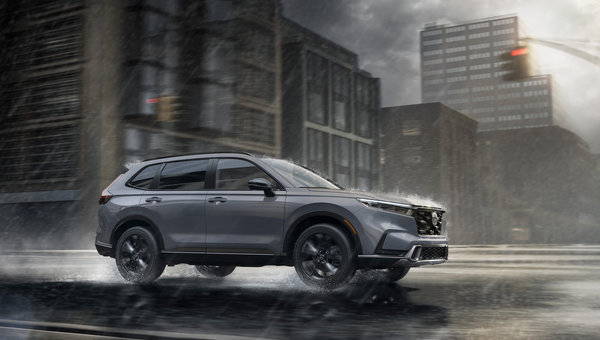A pioneer of the subcompact SUV category, the Honda HR-V (Hi-Rider Revolutionary Vehicle) has gotten a facelift for 2023. This is the second generation of the model. The automaker has developed a new architecture derived from that of the CR-V and the Civic. Reliable and fuel-efficient in the front-wheel drive model (at 8.3 liters per 100 kilometers), the 2023 HR-V is optionally available with all-wheel drive.
The Hyundai Kona, for its part, remains unchanged for 2023, offering multiple powertrains, including an electric model. However, its dependability—and especially its performance—may vary from version to version. The subcompact SUV, initially designed to offer fuel economy, features an inline-four turbo engine producing 276 horsepower, lending it an unexpectedly sporty character, especially when equipped with all-wheel drive. Combined fuel consumption is approximately 10.4 liters per 100 kilometers when running on super premium (or “supreme”) gasoline.
Honda vs the Hyundai Kona: the 2023 HR-V is still roomier
The 2023 Honda HR-V remains voluminous for its class (4,568 mm in length, 1,840 mm in width and 1,620 mm in height). This makes it an exceptionally practical SUV with lots of space in the front part of the cabin. It can easily seat five, and even the rear passengers will enjoy plenty of head- and legroom. The HR-V also offers up to 1,559 liters of cargo space with the rear seats folded flat.
In comparison, the dimensions of the 2023 Hyundai Kona are smaller (4,215 mm in length, 1,800 mm in width and 1,575 mm in height). The cargo area is also significantly more restricted, with a maximum volume of 1,296 liters. Although the look of the Kona has been a success and the base model remains popular, it offers insufficient legroom for rear-seat passengers. Surprisingly, despite its smaller size, the Kona can actually weigh more than the HR-V.
Focusing on the basics vs going all-in
Under the hood, Honda has played the stability and consistency cards. The 2023 HR-V is available with only one option in engines: a 2.0 L inline-four (158 hp/138 lbf·ft), which it borrowed from the Civic. The vehicle aims to be frugal, simple and practical, with an emphasis on safety and integrity.
Conversely, with the 2023 Kona, Hyundai appears to be a bit scattered. The vehicle’s intentions are unclear: is it an economical SUV or a high-performance crossover? As for the electric version, it represents a reprieve of sorts, as Hyundai generally groups its electric vehicles under the IONIQ umbrella. What’s more, while the 2.0 L inline-four with its continuously variable transmission (CVT) does a good job in the base model, the automatic transmission accompanying the 1.6 L inline-four turbo has demonstrated some problems in terms of dependability.



